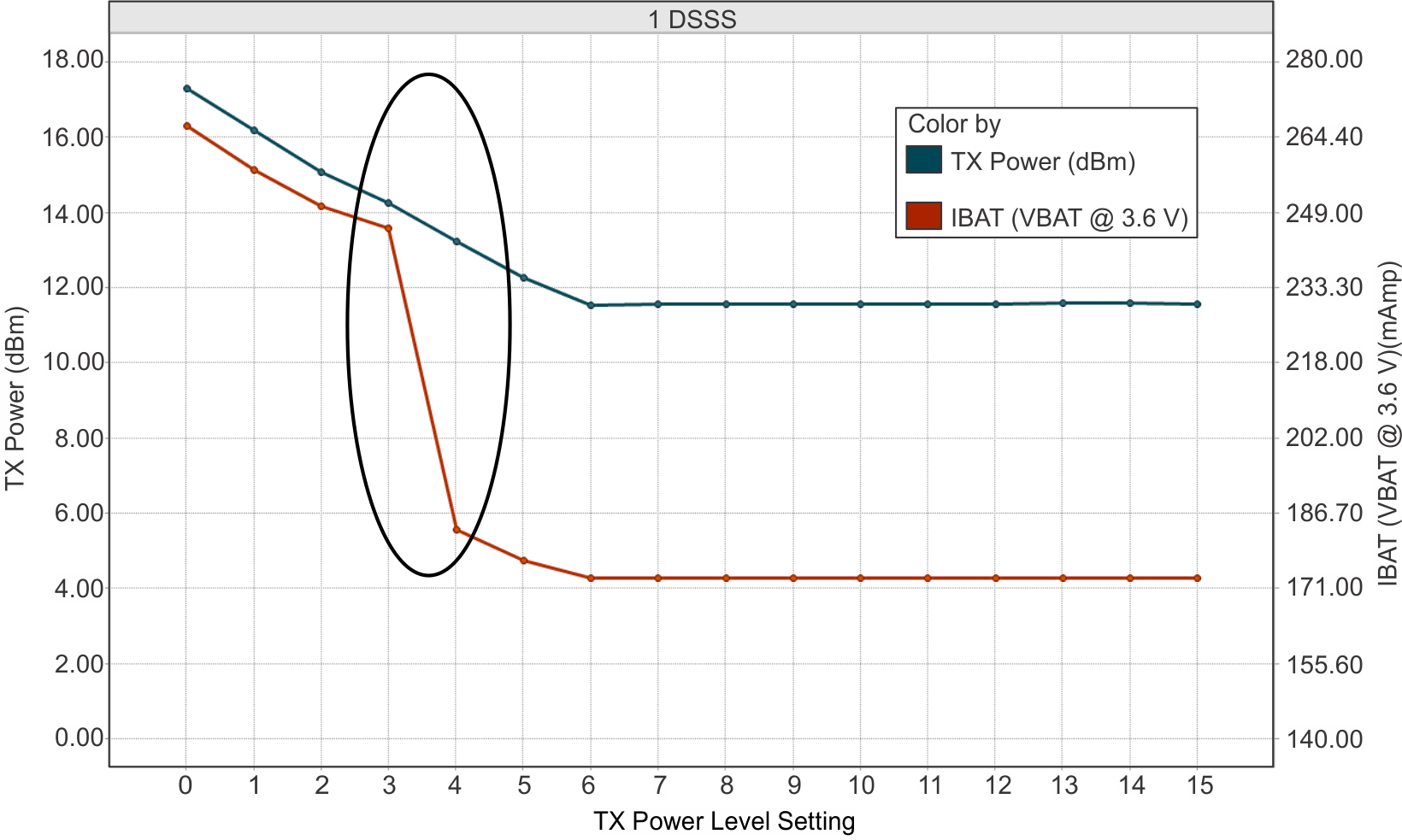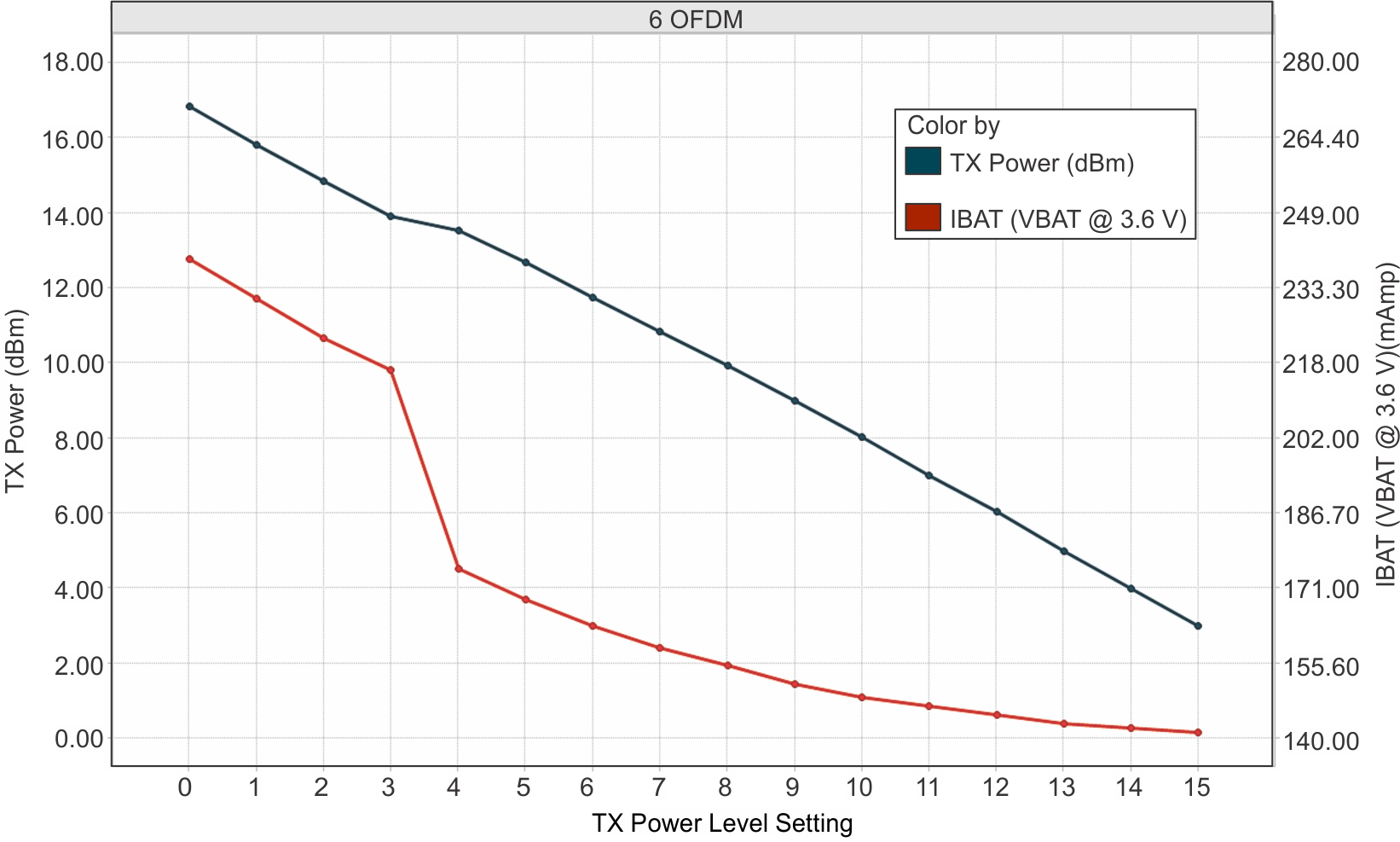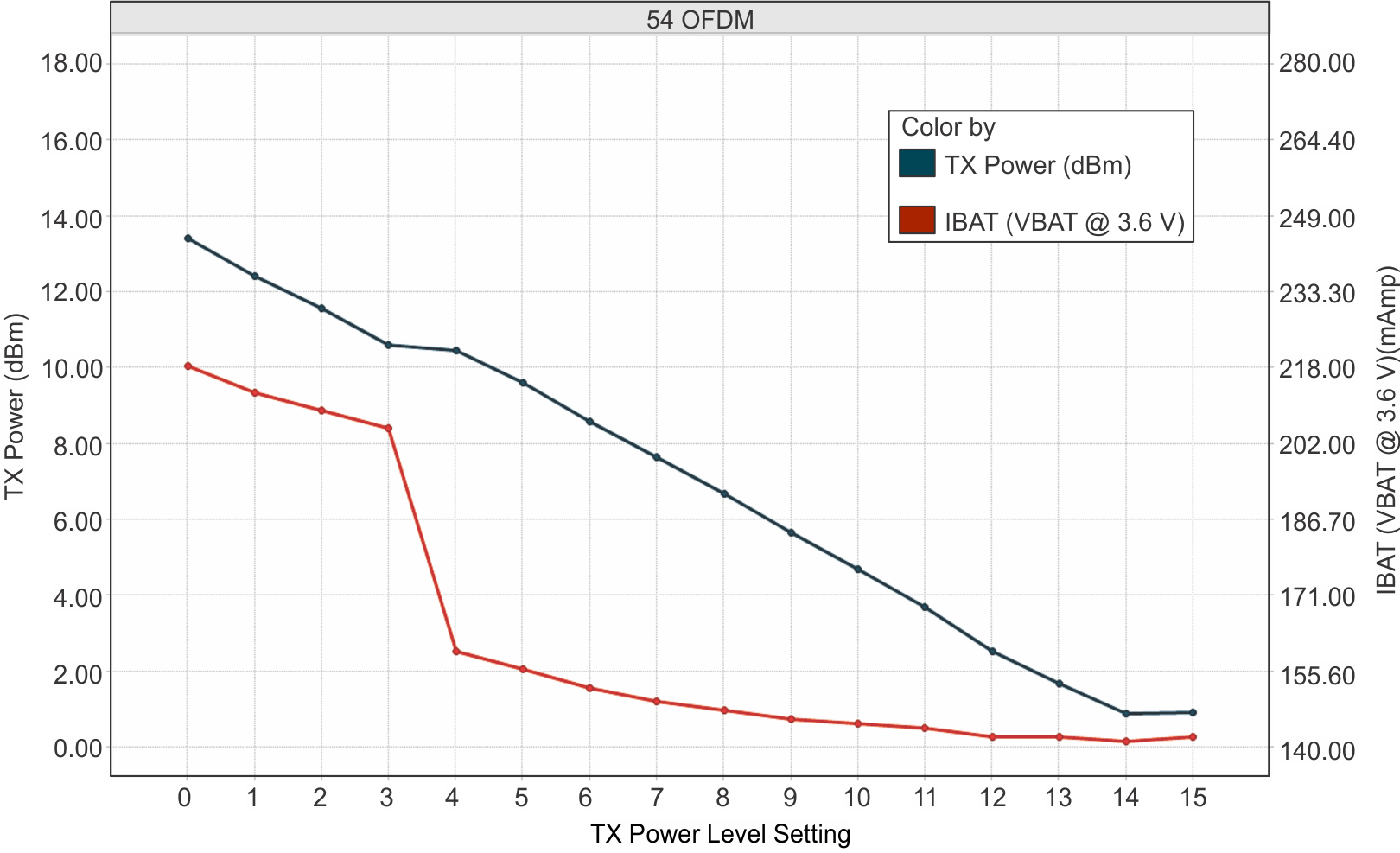SWRS205F March 2017 – December 2024 CC3120MOD
PRODUCTION DATA
- 1
- 1 Features
- 2 Applications
- 3 Description
- 4 Functional Block Diagrams
- 5 Device Comparison
- 6 Terminal Configuration and Functions
-
7 Specifications
- 7.1 Absolute Maximum Ratings
- 7.2 ESD Ratings
- 7.3 Recommended Operating Conditions
- 7.4 Current Consumption Summary
- 7.5 TX Power and IBAT versus TX Power Level Settings
- 7.6 Brownout and Blackout Conditions
- 7.7 Electrical Characteristics
- 7.8 WLAN Receiver Characteristics
- 7.9 WLAN Transmitter Characteristics
- 7.10 Reset Requirement
- 7.11 Thermal Resistance Characteristics for MOB Package
- 7.12 Timing and Switching Characteristics
- 7.13 External Interfaces
- 8 Detailed Description
- 9 Applications, Implementation, and Layout
- 10Environmental Requirements and Specifications
- 11Device and Documentation Support
- 12Revision History
- 13Mechanical, Packaging, and Orderable Information
Refer to the PDF data sheet for device specific package drawings
Mechanical Data (Package|Pins)
- MOB|63
Thermal pad, mechanical data (Package|Pins)
7.5 TX Power and IBAT versus TX Power Level Settings
Figure 7-1, Figure 7-2, and Figure 7-3 show TX Power and IBAT versus TX power level settings for modulations of 1 DSSS, 6 OFDM, and 54 OFDM, respectively.
In Figure 7-1, the area enclosed in the circle represents a significant reduction in current during transition from TX power level 3 to level 4. In the case of lower range requirements (14-dBm output power), TI recommends using TX power level 4 to reduce the current.
 Figure 7-1 TX Power and IBAT vs TX Power Level Settings (1 DSSS)
Figure 7-1 TX Power and IBAT vs TX Power Level Settings (1 DSSS)
 Figure 7-2 TX Power and IBAT vs TX Power Level Settings (6 OFDM)
Figure 7-2 TX Power and IBAT vs TX Power Level Settings (6 OFDM) Figure 7-3 TX Power and IBAT vs TX Power Level Settings (54 OFDM)
Figure 7-3 TX Power and IBAT vs TX Power Level Settings (54 OFDM)